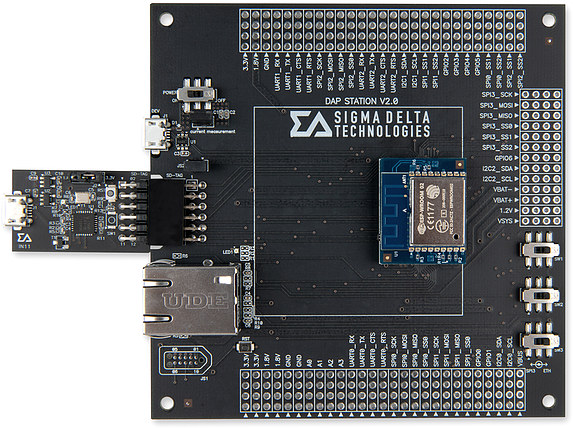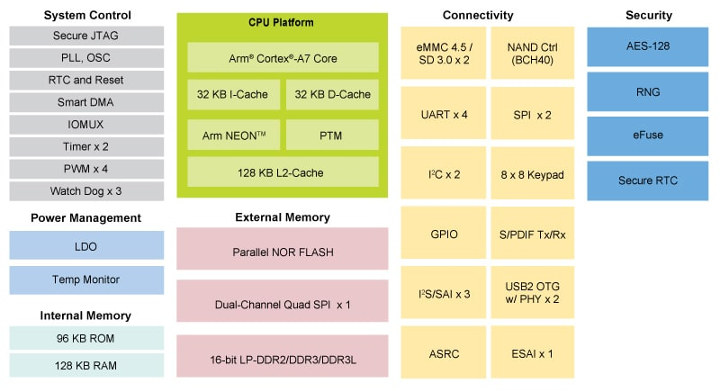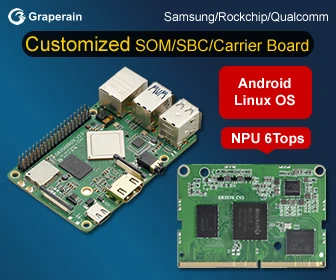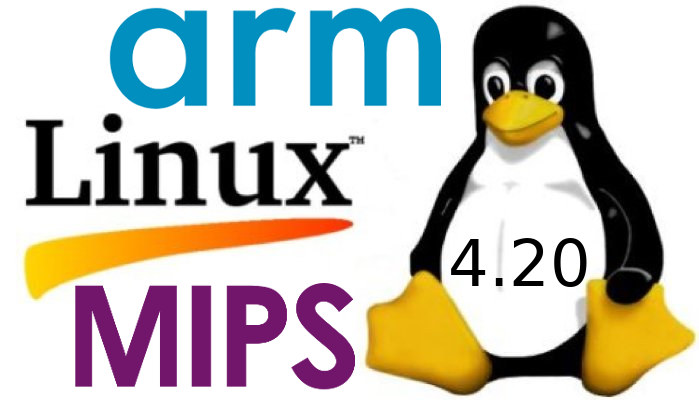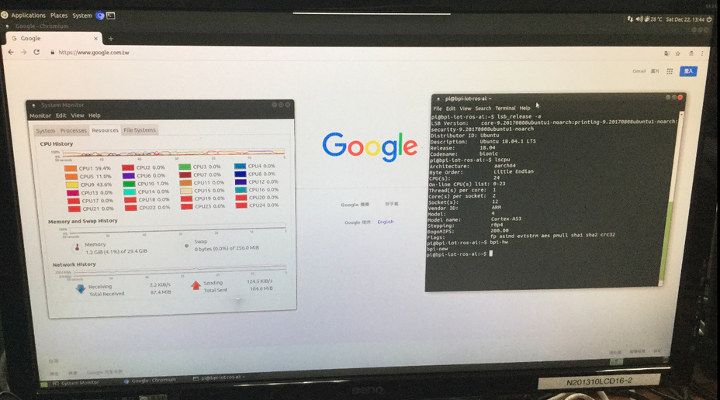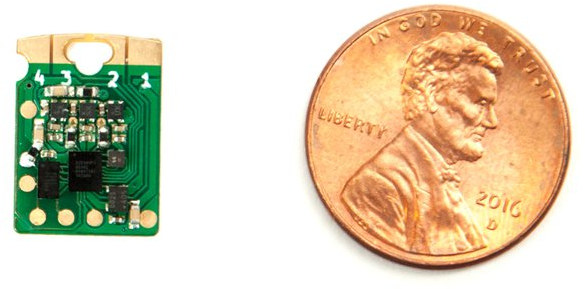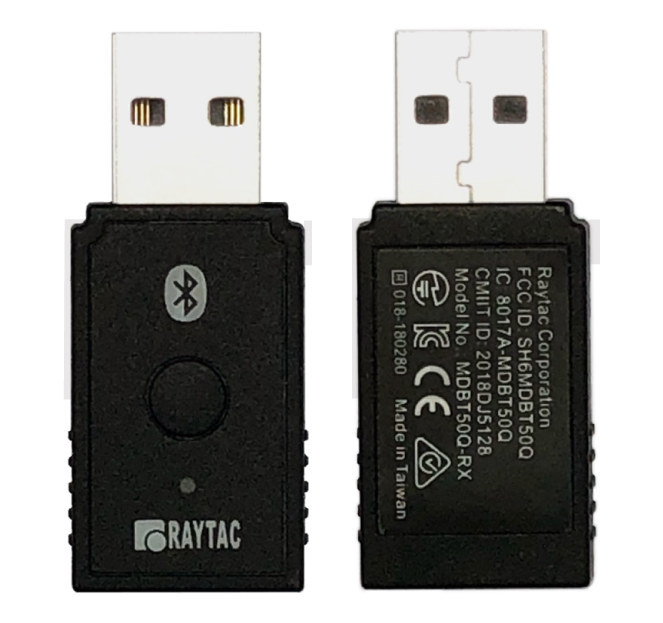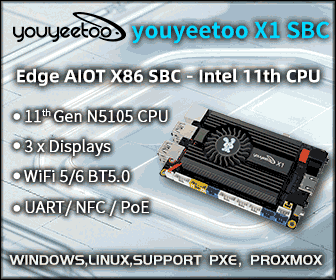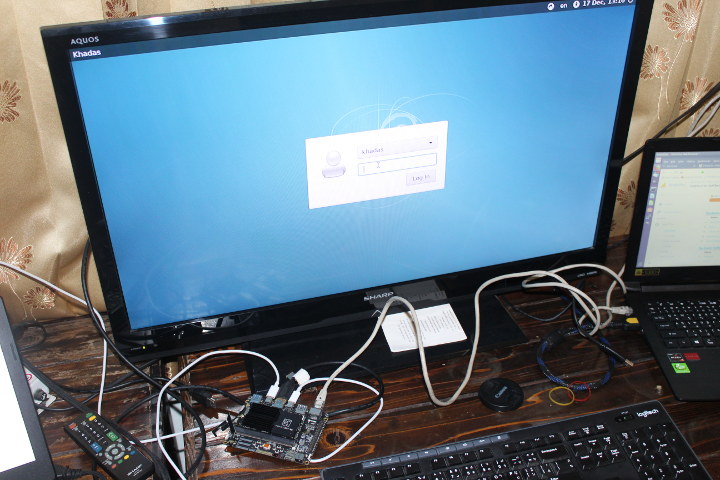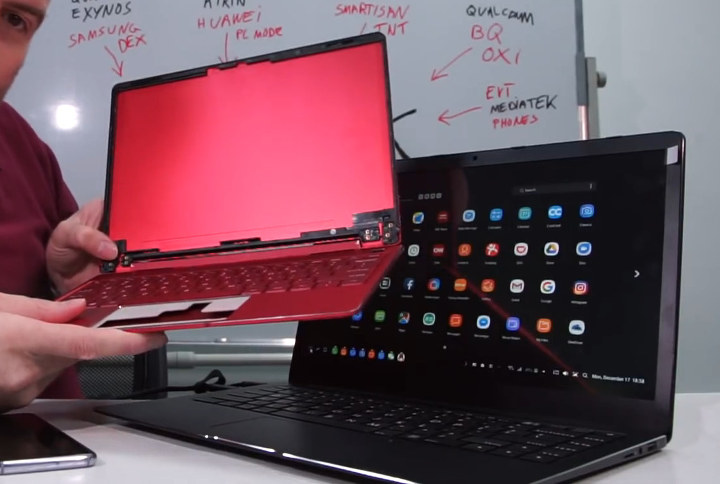South Korea based Sigma Delta Technologies’ SDTxArm Pelion Kit is a modular development kit comprised of a baseboard, as well as CPU and interface modules that is specifically designed to work with Arm Pelion cloud based device management service and Mbed OS for wearables and IoT applications. DAP (Debug Access Port) Station Ver.2 baseboard key features and specifications: USB – 1x micro USB 2.0 port Expansion I/Os via rows of through-holes 3x UART Interfaces 4x SPI Interfaces 3x I²C Interfaces 7x GPIO 4x analog inputs Debugging / Programming 1x TC2050 tag connection designed to allow programming without purchasing additional Interface if the user already has an appropriate Interface Module from other companies. I assume this is related to Tag Connect TC2050-IDC. 1x SD-TAG with JTAG/SWD signals Power Supply – 5V via micro USB port The DAP station takes an SDT Board (i.e. CPU board), as well as an interface board […]
NXP i.MX 6ULZ Cost Efficient Processor Drops Ethernet, Display, & Camera Interfaces
Freescale i.MX 6 processor was first announced in January 2011, and in the first few years I covered many products and development boards based on the single to quad core Cortex A9 processor. Further down the road, the company became part of NXP, and launched Cortex A7 variant such as i.MX 6ULL providing both lower costs and power consumption. But now, I usually skip new products based on i.MX6 because they are often just more of the same, and not really new worthy. But yesterday while writing about Linux 4.20 release, I realized I missed the announcement of i.MX 6ULZ processor similar to i.MX 6UL (UltraLight), but cost optimized for applications that do not require Ethernet, display, nor camera interfaces. NXP i.MX 6ULZ key features and specifications with differences with i.MX 6UL highlighted in bold or stricken-through: CPU – ARM Cortex A7 core @ up to 900 MHz with 128KB […]
Linux 4.20 Release – Main Changes, Arm and MIPS Architectures
After Greg K-H handling Linux 4.19 release, Linus Torvalds is back at the helm, and released Linux 4.20 just before Christmas: Let’s face it, last week wasn’t quite as quiet as I would have hoped for, but there really doesn’t seem to be any point to delay 4.20 because everybody is already taking a break. And it’s not like there are any known issues, it’s just that the shortlog below is a bit longer than I would have wished for. Nothing screams “oh, that’s scary”, though. And as part of the “everybody is already taking a break”, I can happily report that I already have quite a few early pull requests in my inbox. I encouraged people to get it over and done with, so that people can just relax over the year-end holidays. In fact, I probably won’t start pulling for a couple of days, but otherwise let’s just […]
Banana Pi to Launch a 24-Core Arm Server
SinoVoIP has been offering Banana Pi single board computers for several years. Their boards are generally based on Arm processors, offered at a relatively decent price, although not as quite as good value as FriendlyELEC and Orange Pi ones. The company is also known for providing subpar documentation and firmware images, but a fairly active community still formed around their boards 🙂 The company has now demonstrated something a little different with a 24-core Arm server that should eventually be sold as a Banana Pi server board or actual server, as the full details are yet to be known. We did not get a glimpse at the actual hardware, but the blurry photo above gives some clues. We have 24-core Arm Cortex A53 processor with 32GB RAM (29.4GB seen by the OS) running Ubuntu 18.04.1 LTS with MATE desktop. There aren’t that many 24-core Arm Cortex A53 processors, so unless […]
Fomu FPGA board fits inside a USB port, Supports Python, RISC-V Softcore
Sutajio Ko-usagi launched Tomu, a tiny open source hardware USB board that fits inside a USB port at the very beginning of this year. The company is back with a similarly shaped board, but instead of featuring a Silicon Labs EFM32 Arm Cortex-M0+ microcontroller, Fomu is equipped with a Lattice ICE40 UltraPlus FPGA. Fomu specifications: FPGA – Lattice ICE40UP5K FPGA with 5280 logic cells System Memory – 128 kB RAM for a soft CPU Storage – 1 or 2 MB SPI flash Clock – 48 MHz crystal oscillator USB – 1x USB 2.0 FS (12 Mbps) port Misc – 4x buttons, 1x RGB LED The default Fomu firmware exposes a USB bootloader running a RISC-V softcore, and the platform is powerful enough to run a port of Python. It’s also possible to experiment with LM32 and OpenRISC softcores on the platform. Using the board is pretty straightforward as just you […]
Raytac MDBT50Q-RX Bluetooth 5 LE USB Adapter Features nRF52840 WiSoC
Bluetooth 5 has been around for a while, but apart from MakerSpot CC2640 Bluetooth 5 USB dongle and Nordic Semi nRF52840 USB Dongle both for developers (and without case), it’s been hard to find Bluetooth 5 USB adapters. So far the only proper BT 5.0 USB adapter for consumers that’s easily purchasable I know of has been Fanstel USB840F available for about $18 plus shipping. Soon enough there should at least another alternative with Raytac MDBT50Q-RX Bluetooth 5 USB adapter- also based on Nordic Semi nRF52840 WiSoC – that the company very recently announced. Raytac MDBT50Q-RX BT 5 dongle main features and specifications: Bluetooth 5 Module – Raytac MDBT50Q-P1M Nordic nRF52840 SoC Arm Cortex-M4F MCU with 1MB Flash memory, 256kB RAM Connectivity – Bluetooth 5 Certified, supports BT5 Long Range Feature Bluetooth Low Energy, ANT+, Zigbee, Thread (802.15.4) Certifications – FCC, IC, CE, Telec (MIC), KC, SRRC, NCC, RCM, WPC […]
Khadas Captain / Edge SBC Review – Part 2: Ubuntu 18.04
I received Khadas Edge Developer Package with Khadas Edge RK3399 module, Khadas Captain carrier board, and several accessories a few weeks ago, and after checking the hardware in the first part of the review, I’ve now taken the time to review software support, specially Ubuntu 18.04 on the board. Khadas Edge / Captain Firmware There are currently four main choices of firmware for Khadas Edge / Khadas Captain: Ubuntu 18.04 OS with LXDE desktop environment @ https://dl.khadas.com/Firmware/Edge/Ubuntu/ Android ROM @ https://dl.khadas.com/Firmware/Edge/Android/ with Android Nougat being a proper release, Android Oreo (available now) a temporary version that will not be supported, and Android P that will be released and supported by Rockchip later on in 2019 Armbian RK3399 for Khadas Edge looks to be work-in-progress right now LibreELEC for playing videos on the platform I decided to focus on Ubuntu 18.04 for this review, and Karl who has his own sample […]
$100 Laptop Shell to Support Smartphones, USB Type-C PC Sticks, and SBCs (Crowdfunding)
Launched in 2011, Motorola Lapdock turned the company’s Atrix 4G smartphone into an Android laptop, but it did not end up being a commercial success so the company stopped manufacturing the laptop shell a few years ago. It is still used by hobbyist for example to create their own DIY Raspberry Pi laptop, and in recent years, with phoned getting much more powerful and desktop support for Android improving, lookalikes have been launched such as NextDock or Mirabook. A new option will soon be available, as Charbax known for his armdevices.net website and YouTube channel has just launched an Indiegogo campaign for a $100 Lapdock. Two models will be available with Lapdock 11.6″, and Lapdock 14.1″ referring to their size, but sadly no other specifications were provided for the display. We still know they’ll work with Samsung Dex / Linux on Dex modes, Huawei PC mode, and basically any device […]

